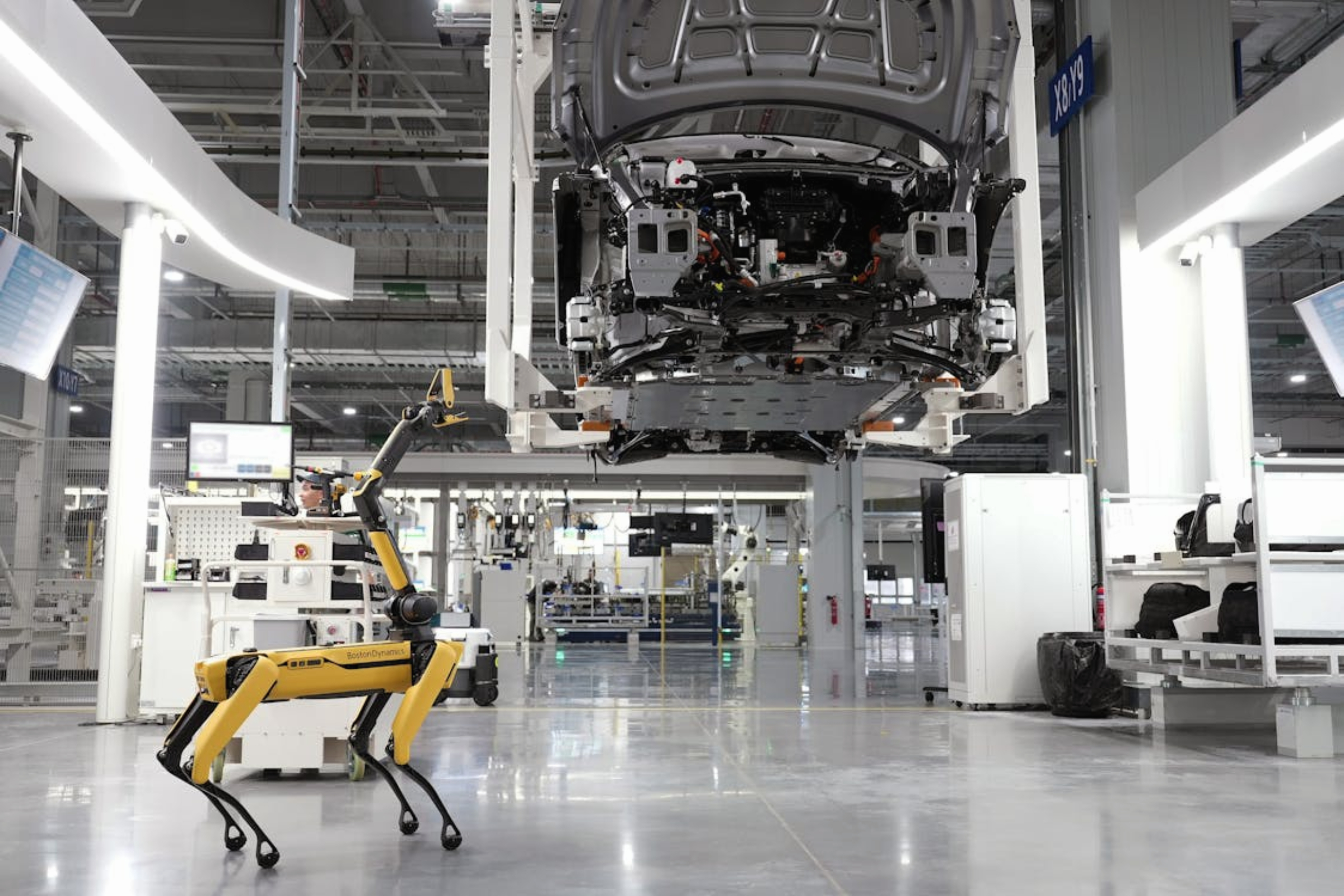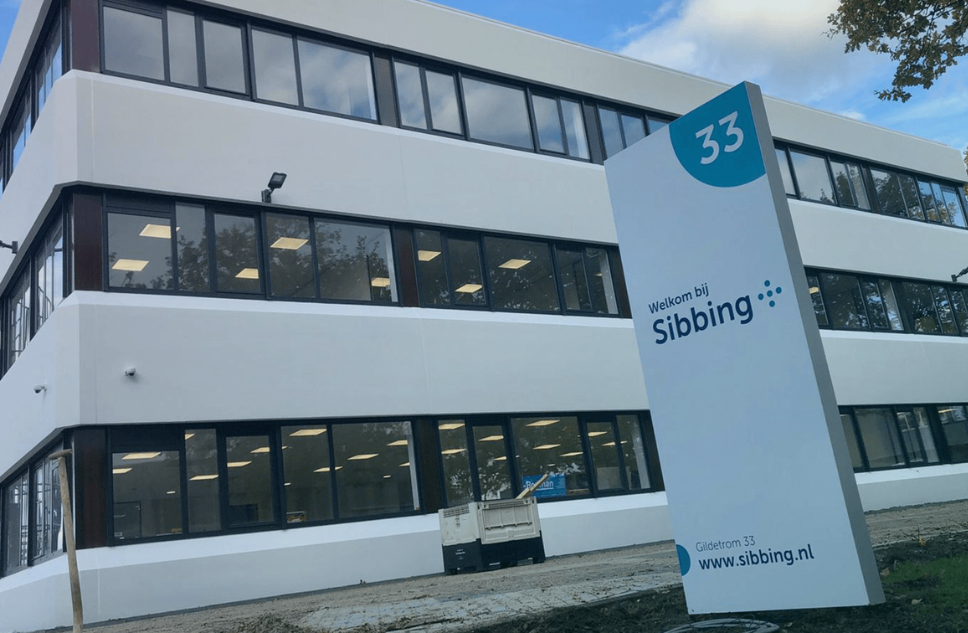News & Blogs
Stay updated with the latest news, insights, and expert blogs from Emixa. Explore industry trends, digital innovations, and company updates all in one place.

- ERP Software
Employees App for Custom Communication and Collaboration at Aartsen
In collaboration with Emixa, Team Aartsen developed a versatile and user-friendly mobile application with calling functionality. The preference was to develop the app entirely according to their specific needs. In this article, you'll learn more about the collaboration between Aartsen and Emixa and how this custom solution came to fruition.

- PLM
- Digital Transformation
Operational Excellence: How Manufacturing Companies Can Work Smarter, Not Harder
In today’s volatile world, the manufacturing industry is under increasing pressure to work smarter, not harder. Operational Excellence plays a key part in this. How can manufacturing companies achieve operational excellence? And how can digital technologies support them in this? Our experts, Feike de Groot, Robert te Vaarwerk, and Vincent Verheul, show you a clear growth path for operational excellence.

- SAP
Change management: People at the center of SAP S/4HANA implementations
In the rapidly evolving world of business operations, digitalization, such as an SAP S/4HANA implementation, is an ambitious goal. The benefits are clear – process optimization, data centralization and improved decision making, but the process of change can also be challenging. The challenge can be found in one of the most important - whether or not the most important - link of an organization: the people.

- Business Consulting
Agile Way of Working? Beware of These 6 Pitfalls
Agile working: empty buzzword or indispensable strategy? Some see Agile as the holy grail for companies in a world full of change, while others find it a hassle with post-its. The fact remains: organisations that take Agile seriously often thrive where others struggle. Curious about how to make Agile work for you and what to avoid? In this blog, you will discover the strengths and pitfalls of Agile working.

- Boomi
- ERP Software
- +1
Sibbing Implement IPaaS for Relationship Management & Data Integration
Emixa enhances integration and data management at Sibbing with Boomi MDM Sibbing can now easily monitor and manage all relationships and data centrally A single source of truth across all systems replaces isolated data silos Having integrated data accessible through all your systems is crucial in the current digital information era. Centrally managing relationships (customers) on different platforms was a significant challenge for Sibbing, a financial consultancy for (para)medics. To enhance this process, Sibbing and Emixa built a modern iPaaS solution based on Boomi technology. Learn more about it in this article.

- Mendix
- AI
The Top 10 Challenges Companies Face in Their Digital Transformation - and How to Deal with Them
Digital transformation is a priority for most established companies. Some have successfully digitalised their entire operations, reaping the benefits of working more efficiently and accessing cutting-edge technologies like generative AI. However, many organisations face significant challenges on their digital journey – sometimes to the point where progress stalls completely. What are the top challenges and how can companies deal with them?

- Manufacturing
- Digital Twin
The Adoption of Digital Twins in Manufacturing
In the relentless pursuit of operational excellence and superior product quality, the manufacturing industry finds itself at the threshold of a technological revolution. At the forefront of this transformation is the adoption of ‘digital twins’, a concept that promises not only to enhance operational efficiency but also to redefine competitive strategies. This article delves into the emergence of digital twins, tracing their historical roots and exploring their potential to bolster the manufacturing sector's competitiveness.

- Industry 4.0
Do Machine Factories Risk Becoming Redundant?
Blackberry, Blockbuster and Kodak. History is filled with companies that were once leaders in their own industries, but were eventually overtaken by competitors or even ceased to exist entirely. The common thread in their downfall? They failed to adapt to the fundamental shift in expectations from the market and demand from the customer, driven by competitors who made use of the latest technology. Blackberry, a pioneer in mobile phones, confidently optimised the QWERTY keyboard and scroll wheel. Meanwhile, Apple conquered market share with an innovative touchscreen and mobile operating system. Blockbuster, the company where you could rent films in physical stores, did not adapt itself in time to the changing business models and new technological possibilities that Netflix did take advantage of. Kodak, the pioneer of digital photography, hesitated to move away from traditional film activities, allowing competitors like Sony, Nikon, and Canon to seize the opportunity and advance the invention. The mentioned companies faced challenges in the initial years of digitisation, a trend that has now permeated almost all industries, reshaping both products and production processes. Presently, leading organisations are actively refining their digitalisation strategies, considering how products and services are developed, produced, and enhanced. Both large and small manufacturers must adapt The latest wave of technologies, Industry 4.0, gives a new meaning to service, competition and customer expectations across the entire Supply Chain. From small businesses to industry leaders. Industry 4.0 makes it possible to integrate digital technologies into all business processes, creating an 'End-to-End Platform' that seamlessly connects the virtual and physical worlds. Digital twins, virtual representations of products and production processes, are connected via a digital thread: An always available, accessible feed of real-time data. This digital thread is available to everyone at any time and allows product and production engineers to work simultaneously because they have immediate access to the information they need. Industry 4.0 transforms modern machine factories no less than new technologies transformed the mobile phone, film distribution or photography industries. However, recent research suggests that many machine factories are not well prepared for this. Of the machine factories surveyed: Over 50% still rely on standalone CAD and CAM systems Less than 30% manage and control their data Around 75% rely on disjointed CMM systems 61% still use paper documentation Only 37% use 3D printing in production The virtual Supply Chain is about businesses, not technology Too many machine factory owners believe that strategies that helped them in the past will also bring success in the future. Expertise in production was the competitive advantage for many machine factories, but expertise alone is no longer enough these days. As essential parts of an increasingly global supply chain, machine factories must shift their traditional focus to a customer-focused one, producing products faster and better than ever before, where and when the customer wants. A digitisation strategy is not just about showcasing new technologies, although it is often presented that way. Digitisation is about a robust business strategy, aiming to lead a successful production operation. Machine factories that apply Industry 4.0 technologies are better prepared to: Secure orders globally by delivering high-quality products faster, outpacing competitors. Increase margins through investments in new processes rather than tinkering with outdated ones. Enter new markets with a focus on innovation and growth. Embrace new manufacturing technologies such as Additive Manufacturing, advanced robotics and automation, and emerging technologies like Artificial Intelligence and Virtual Reality. It is important to note that Blackberry, Blockbuster and Kodak did not fail because they did not realise how new technologies were transforming their industry, or because they did not adapt. They failed because their response was not aligned with the challenge. An article in the Harvard Business Review, "Why Good Companies Go Bad," explains: "Managers of endangered companies typically identify the threat early, thoroughly analyse its implications for their business, and initiate a flurry of initiatives in response. However, despite these efforts, the companies continue to struggle." “The problem is not an inability to take action, but an inability to take appropriate action.” Incremental technological advancements merely address issues from the past decade, failing to tackle fragmented processes and disconnected data across design, engineering, production, and quality. Explore options step-by-step Machine factory owners often perceive Industry 4.0 as beyond their reach. It is deemed too expensive, time-consuming, and disruptive to ongoing operations. Yet, it's feasible to embark on a gradual journey towards Industry 4.0 transformation. At Cards, we assist companies with a well-crafted strategy and planned implementation that considers immediate ROI and integration with existing business processes while accelerating organizations on the path to digitalisation. Bottom Line Machine factories confront new challenges shaped by evolving market expectations. Customers no longer tolerate errors or delays, and demand responsiveness beyond the capabilities of inefficient production processes. In response, machine factories must adopt an end-to-end solution; failure to do so risks falling behind the competition. Curious about the benefits of the digital machine factory? Reach out to us, and we'll gladly provide you with more information.

- IT
Help, I’ve become a key user!
Maybe you know the feeling: you go to work thinking it’s going to be a normal day. But then the unexpected happens: you are asked to become a key user of a new IT system that’s about to be implemented. Yes, you heard that right, you are one of the chosen ones to help with the implementation. This might cause some hesitation because you are unfamiliar with this role. In this blog, you will discover the advantages of being part of your organisation’s key user team and why key users are indispensable during the implementation of a new IT system. So, read on and find out why you’ve just taken an important step in your career!